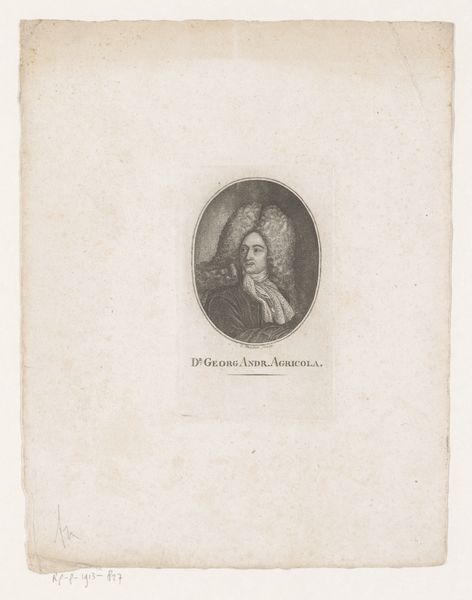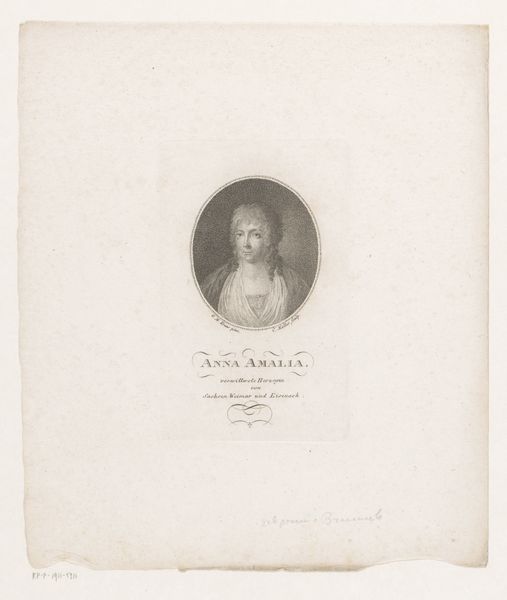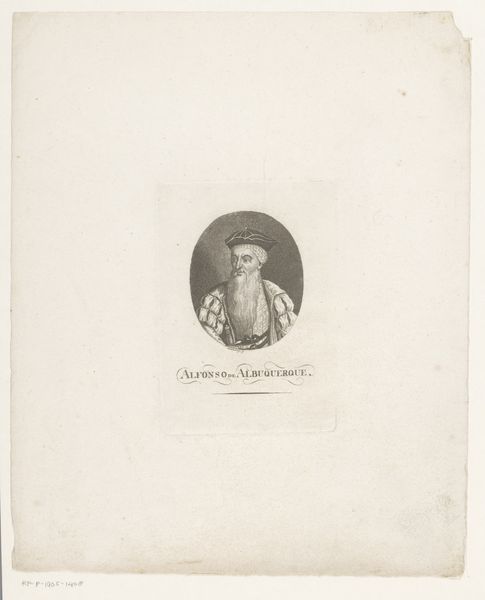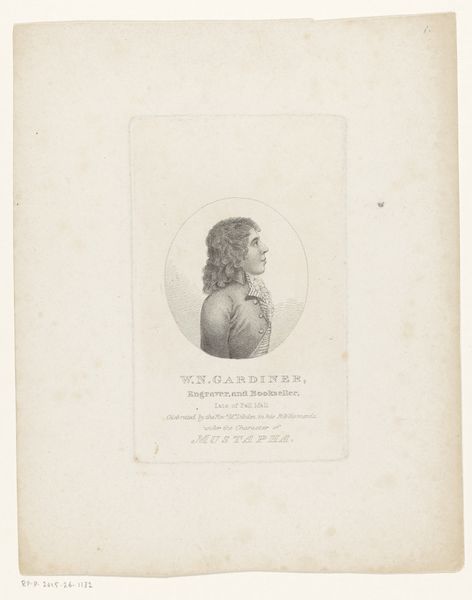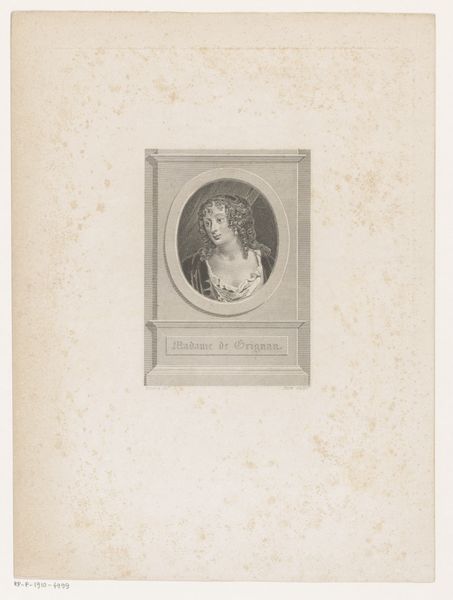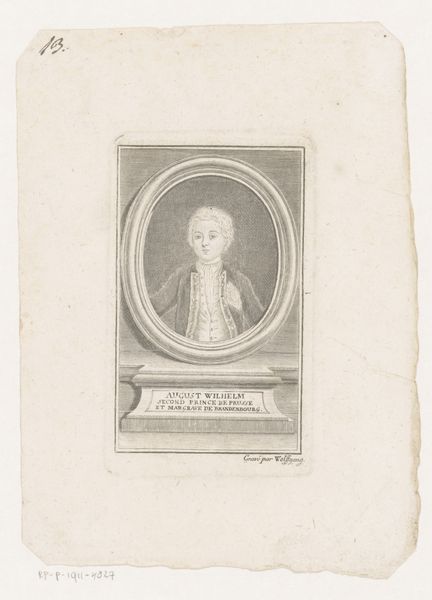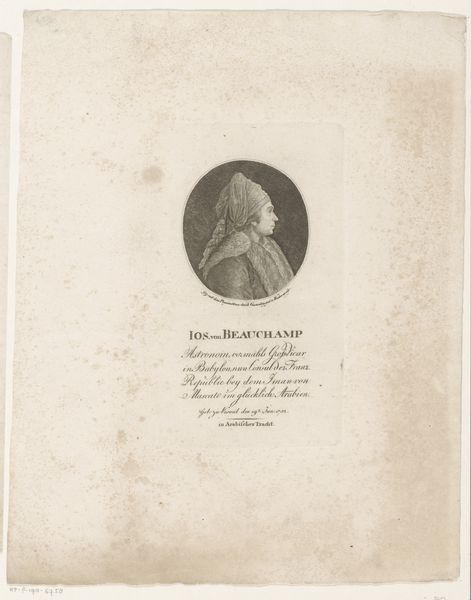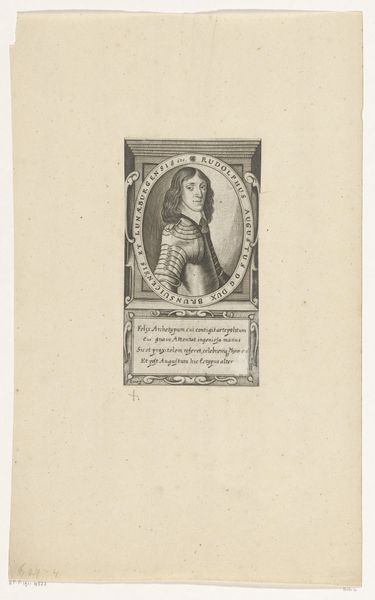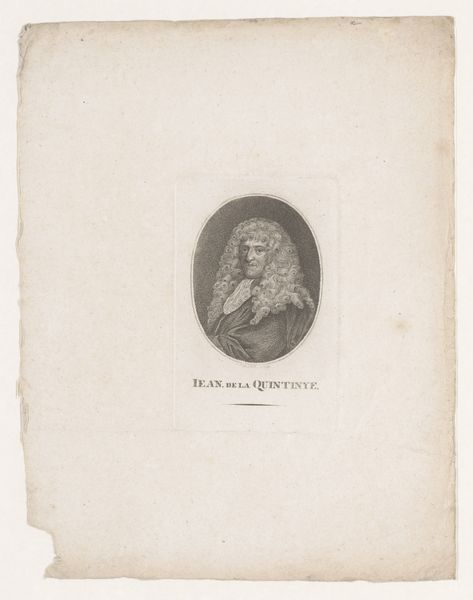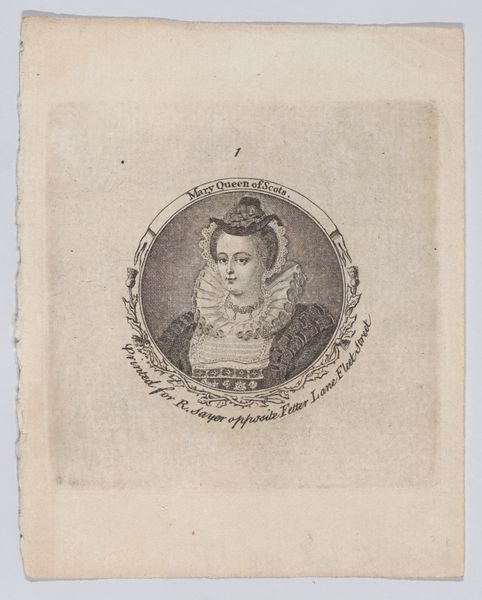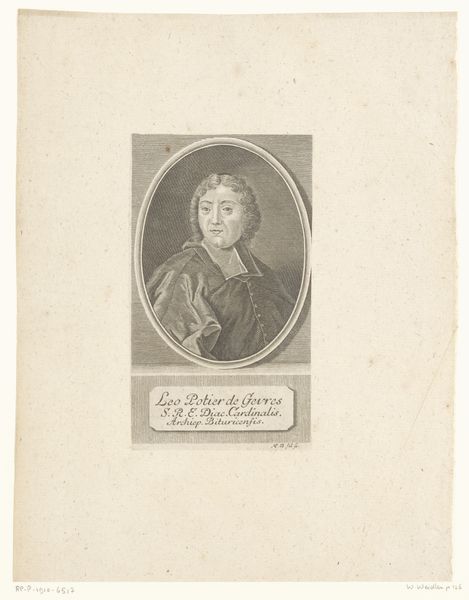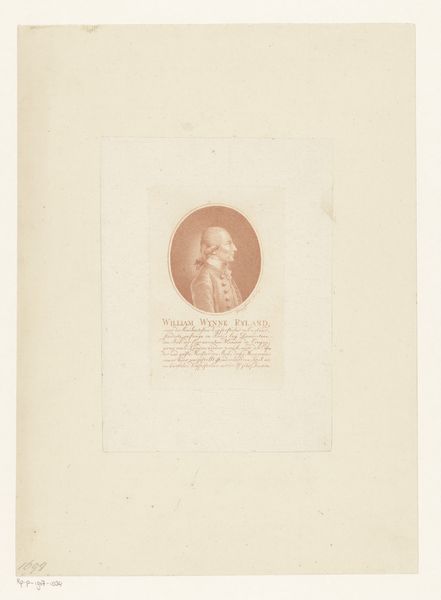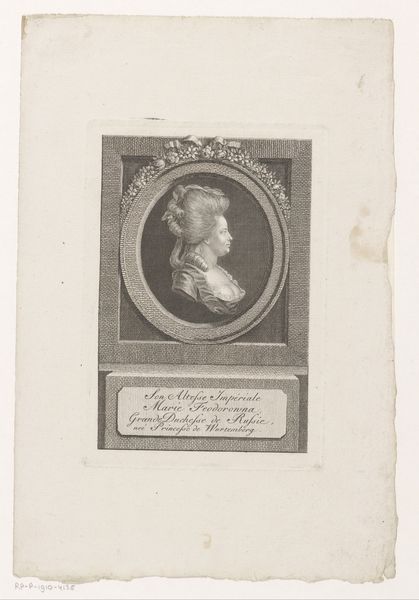
print, engraving
#
portrait
#
neoclacissism
# print
#
engraving
#
realism
Dimensions: height 142 mm, width 94 mm
Copyright: Rijks Museum: Open Domain
Johann Christian Ernst Müller created this portrait of Roswitha van Gandersheim using etching and possibly other techniques. Roswitha, a 10th-century Benedictine nun, is depicted here centuries after her death, reflecting enduring interest in her as a figure of female intellect and religious devotion. Consider the historical context: Roswitha lived in a time when opportunities for women, particularly in intellectual pursuits, were severely limited. Her writings—poems, plays, and historical accounts—challenged these constraints, offering perspectives on power, gender, and faith from a woman's point of view. Müller's print invites reflection on how society remembers and represents women who defied expectations. How does the act of portraying her so many years later affect our understanding of her legacy? The image emphasizes Roswitha's piety and learning. In viewing this, we might ask ourselves how we continue to negotiate the complex intersections of gender, religion, and intellectual life.
Comments
No comments
Be the first to comment and join the conversation on the ultimate creative platform.
